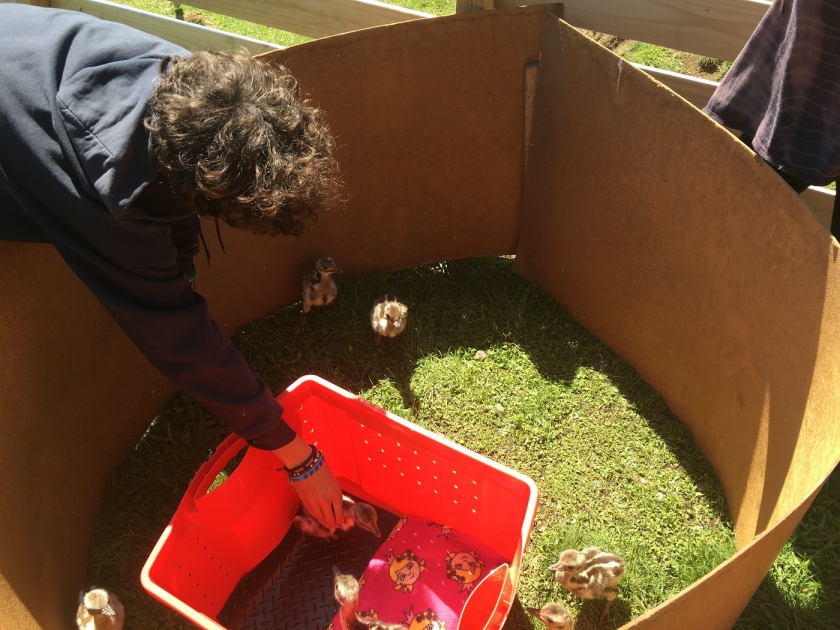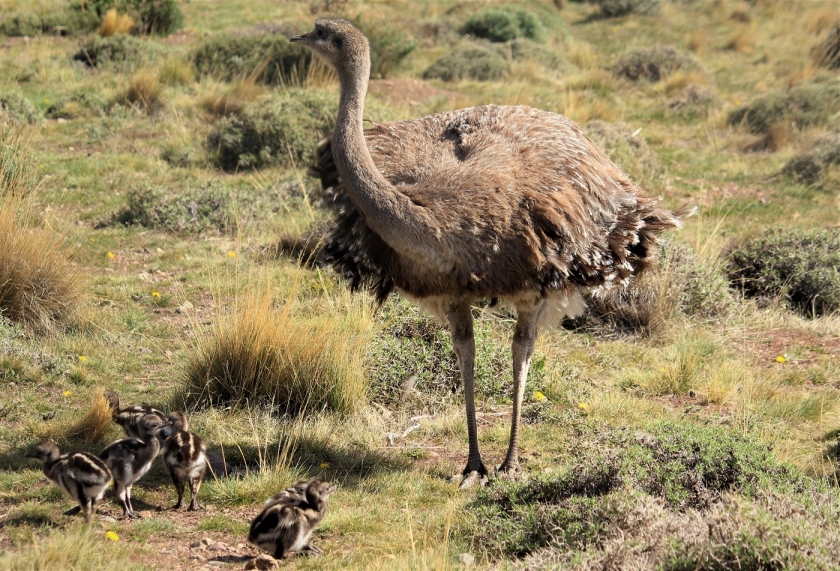Restoring a rare bird species to Chilean Patagonia
This article originally appeared at https://www.unenvironment.org/news-and-stories/story/restoring-rare-bird....An ostrich-like bird, the Darwin’s (or Lesser) rhea is one of the most distinctive, fabled and endangered residents of the Chilean steppe.
Rheas do not fly, but thanks to their unusually large wings, which they spread behind their bodies while running from predators, they can sprint at speeds over 50 kph. Two species of rhea, the Greater and Lesser, occupy overlapping ranges in Patagonia which straddles Argentina and Chile.

A groundbreaking conservation programme by Tompkins Conservation is helping to restore this iconic bird to Chilean Patagonia.
“We've had a very successful hatching season, with 22 new chicks in Patagonia National Park, at South America's only reproduction centre for Darwin's rhea,” says Kristine Tompkins, President of Tompkins Conservation and a UN Environment Programme (UNEP) Patron of Protected Areas.
“In four years of our rewilding programme the population of this endangered species, which fell to only 20 in Patagonia National Park, has tripled,” she adds.
The Ñandú (Darwin’s rhea) Reproduction Centre began operations in 2015 in Patagonia National Park. It’s part of a larger rewilding programme to restore native species to create whole and healthy ecosystems.
“Since the 1970s there have been unprecedented global declines in the extent and integrity of ecosystems, distinctness of local ecological communities, abundance and number of wild species, and the number of local domesticated varieties,” says a recent article in Science titled Pervasive human-driven decline of life on Earth points to the need for transformative change, written by authors of the Intergovernmental Science-Policy Platform on Biodiversity and Ecosystem Services Global Assessment.
“In the face of the global extinction crisis, rewilding endangered species is an act of vital importance. In addition, functional ecosystems and protected areas represent one of the most efficient and long-term strategies to mitigate the climate crisis,” says Doreen Robinson, UNEP ecosystems and wildlife expert.
Cristián Saucedo, Director of Wildlife at Tompkins Conservation, explains: “We are very happy with this breeding season as a concrete advancement towards repopulating Darwin’s rhea in the region and ensuring their long-term permanence.
This initiative is the first effort to bring back the species to the Aysén region of Chile.

The goal of Tompkins Conservation’s rewilding team is to increase the population of wild Darwin’s rhea in Patagonia National Park by at least 30 per cent. This new national park, created with the donation of land and infrastructure by Tompkins Conservation in 2019, is the only protected area in the region with adequate habitat for the species, and the only national park in Chile with a reproduction centre for threatened species.

“The work of rewilding by biologists and specialists in our team is of vital importance,” says Carolina Morgado, Executive Director of Tompkins Conservation Chile. The rewilding team is also helping to restore populations of puma and endangered huemul deer, among others.
For further information please contact Carolyn McCarthy, Global Communications Coordinator, Tompkins Conservation or Doreen Robinson: [email protected]